Showing Spotlights 121 - 128 of 201 in category All (newest first):
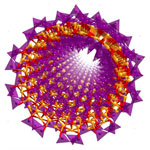 Nanotechnology is increasingly being researched for applications in the construction industry and cement is a particular focus. Apart from reducing the damaging environmental side effects of cement production, another research focus is on reinforcing concrete to improve its mechanical performance. When researchers think of nanomaterial reinforcements for concrete, carbon nanotubes come as first option. The problem with carbon nanotubes is that they are water insoluble. In order to make them compatible with water chemistry, they must be functionalized in advance. To get around this problem, a team of scientists have proposed inorganic oxide nanotubes as natural means of reinforcements of cement pastes, in view of their chemically compatibility with the cement-water system.
Nanotechnology is increasingly being researched for applications in the construction industry and cement is a particular focus. Apart from reducing the damaging environmental side effects of cement production, another research focus is on reinforcing concrete to improve its mechanical performance. When researchers think of nanomaterial reinforcements for concrete, carbon nanotubes come as first option. The problem with carbon nanotubes is that they are water insoluble. In order to make them compatible with water chemistry, they must be functionalized in advance. To get around this problem, a team of scientists have proposed inorganic oxide nanotubes as natural means of reinforcements of cement pastes, in view of their chemically compatibility with the cement-water system.
Jun 12th, 2012
 An international group of researchers reported a new record long distance for quantum teleportation. The authors claim a free-space distance of 143 kilometers. Quantum teleportation communicates physical information soundly without traveling directly through the space connecting the communicating parties. The reporting team includes quantum teleportation pioneer Anton Zeilinger of the Quantum Optics, Quantum Nanophysics, Quantum Information at the University of Vienna. Quantum teleportation combines classical and quantum information channels to transmit the complex state of quantum particles. The communication method conveys complete quantum information without the need to pass directly through the space between communicating parties.
An international group of researchers reported a new record long distance for quantum teleportation. The authors claim a free-space distance of 143 kilometers. Quantum teleportation communicates physical information soundly without traveling directly through the space connecting the communicating parties. The reporting team includes quantum teleportation pioneer Anton Zeilinger of the Quantum Optics, Quantum Nanophysics, Quantum Information at the University of Vienna. Quantum teleportation combines classical and quantum information channels to transmit the complex state of quantum particles. The communication method conveys complete quantum information without the need to pass directly through the space between communicating parties.
Jun 4th, 2012
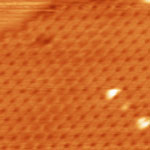 The fascination with two-dimensional (2D) materials that has started with graphene has spurred researchers to look for other 2D structures like for instance metal carbides and nitrides. One particularly interesting analogue to graphene would be 2D silicon - silicene - because it could be synthesized and processed using mature semiconductor techniques, and more easily integrated into existing electronics than graphene is currently. However, silicene does not seem to exist in nature nor is there any solid phase of silicon similar to graphite. Nevertheless, silicene has been predicted by theory as early as 1994. Researchers have now presented the first clear evidence for the synthesis and thus the existence of silicene - a two-dimensional material, with a honeycomb-like arrangement of silicon atoms.
The fascination with two-dimensional (2D) materials that has started with graphene has spurred researchers to look for other 2D structures like for instance metal carbides and nitrides. One particularly interesting analogue to graphene would be 2D silicon - silicene - because it could be synthesized and processed using mature semiconductor techniques, and more easily integrated into existing electronics than graphene is currently. However, silicene does not seem to exist in nature nor is there any solid phase of silicon similar to graphite. Nevertheless, silicene has been predicted by theory as early as 1994. Researchers have now presented the first clear evidence for the synthesis and thus the existence of silicene - a two-dimensional material, with a honeycomb-like arrangement of silicon atoms.
Mar 23rd, 2012
 Recent studies have found that nanomaterials - in this case dusts and powders having nanosize particles - exhibit an explosion severity which is not disproportionate to micrometer-sized materials, but the likelihood of explosion is quite high due to very low ignition energies and temperatures.
A recent review concludes that nanomaterials present a dust explosion hazard, with metallic nanoparticles being particularly reactive. Nanomaterials have been shown to display lower ignition energy and temperature requirements than larger particles. Due to this high sensitivity, explosion hazards may exist for many processes including, but not limited to, mixing, grinding, drilling, sanding, and cleaning.
Recent studies have found that nanomaterials - in this case dusts and powders having nanosize particles - exhibit an explosion severity which is not disproportionate to micrometer-sized materials, but the likelihood of explosion is quite high due to very low ignition energies and temperatures.
A recent review concludes that nanomaterials present a dust explosion hazard, with metallic nanoparticles being particularly reactive. Nanomaterials have been shown to display lower ignition energy and temperature requirements than larger particles. Due to this high sensitivity, explosion hazards may exist for many processes including, but not limited to, mixing, grinding, drilling, sanding, and cleaning.
Mar 20th, 2012
 Researchers and material scientists have been fascinated by spider silks for a long time - ultra-strong and extensible self-assembling biopolymers that outperform the mechanical characteristics of many synthetic materials, including steel. Atomistic studies have contributed to a better understanding of the source of the strength and toughness of this amazing biological material. Now, researchers have come up with another set of very surprising findings: The highly periodical structure of spider silk can sustain super fast thermal transport that surpasses those of most organic and inorganic materials. This discovery shows that highly organized organic materials can feature extremely high thermal conductivity.
Researchers and material scientists have been fascinated by spider silks for a long time - ultra-strong and extensible self-assembling biopolymers that outperform the mechanical characteristics of many synthetic materials, including steel. Atomistic studies have contributed to a better understanding of the source of the strength and toughness of this amazing biological material. Now, researchers have come up with another set of very surprising findings: The highly periodical structure of spider silk can sustain super fast thermal transport that surpasses those of most organic and inorganic materials. This discovery shows that highly organized organic materials can feature extremely high thermal conductivity.
Mar 15th, 2012
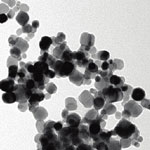 Several studies in the literature have highlighted that as nanomaterials "age" they can undergo oxidation; sintering (coalescence); surface ligand displacement; smaller nanoparticle formation; and surface carbonate formation. Nevertheless, no studies are available on how these changes affect the physicochemical properties of the nanomaterials. The aging of nanomaterials is expected to be rapid even under ambient environmental conditions. With the consequence that pristine, as synthesized materials - which are commonly used in nanotechnology-relevant environmental health and safety (EHS) studies - are never really encountered under natural environmental conditions. Which means that researchers who investigate the applications and implications of nanomaterials need to have a clear understanding of the aging process of these materials and need to take its effects into consideration.
Several studies in the literature have highlighted that as nanomaterials "age" they can undergo oxidation; sintering (coalescence); surface ligand displacement; smaller nanoparticle formation; and surface carbonate formation. Nevertheless, no studies are available on how these changes affect the physicochemical properties of the nanomaterials. The aging of nanomaterials is expected to be rapid even under ambient environmental conditions. With the consequence that pristine, as synthesized materials - which are commonly used in nanotechnology-relevant environmental health and safety (EHS) studies - are never really encountered under natural environmental conditions. Which means that researchers who investigate the applications and implications of nanomaterials need to have a clear understanding of the aging process of these materials and need to take its effects into consideration.
Mar 8th, 2012
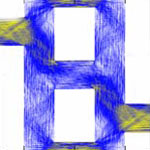 Researchers have demonstrated that electrons in nanoscale networks can behave like car drivers in congested cities. Traffic planners are sometimes faced with a rather counter-intuitive observation - adding a new road to a congested road network can lead to a deterioration of the overall traffic situation, i.e. longer trip times for individual road users. Or, in reverse, blocking certain streets in a complex road network can counter-intuitively reduce congestion. This has become known as the Braess paradox. Researchers have now applied the concept of the Braess paradox to the quantum world. By combining quantum simulations of a model system and scanning-probe experiments, they have shown that an analogue of the Braess paradox can occur in mesoscopic semiconductor networks, where electron transport is governed by quantum mechanics. The paradox manifests itself by an increase of the conductance network when one arm in the network is partially blocked in a controlled manner.
Researchers have demonstrated that electrons in nanoscale networks can behave like car drivers in congested cities. Traffic planners are sometimes faced with a rather counter-intuitive observation - adding a new road to a congested road network can lead to a deterioration of the overall traffic situation, i.e. longer trip times for individual road users. Or, in reverse, blocking certain streets in a complex road network can counter-intuitively reduce congestion. This has become known as the Braess paradox. Researchers have now applied the concept of the Braess paradox to the quantum world. By combining quantum simulations of a model system and scanning-probe experiments, they have shown that an analogue of the Braess paradox can occur in mesoscopic semiconductor networks, where electron transport is governed by quantum mechanics. The paradox manifests itself by an increase of the conductance network when one arm in the network is partially blocked in a controlled manner.
Feb 21st, 2012
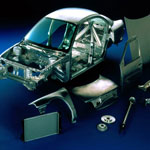 This article summarizes the progress, products outlook, advantages, and limitations of nanocomposites in the automotive industry. Polymer nanocomposites represent a new class of multiphase materials containing dispersion of nano-sized filler materials such as nanoparticles, nanoclays, nanotubes, nanofibers etc. within the polymer matrices. Owing to their nanoscale size features and very high surface-to-volume ratios, they possess unique combination of multifunctional properties not shared by their more conventional composite counterparts reinforced with micro-sized fillers. These multifunctional nanocomposites not only exhibit excellent mechanical properties, but also display outstanding combination of optical, electrical, thermal, magnetic and other physico-chemical properties.
This article summarizes the progress, products outlook, advantages, and limitations of nanocomposites in the automotive industry. Polymer nanocomposites represent a new class of multiphase materials containing dispersion of nano-sized filler materials such as nanoparticles, nanoclays, nanotubes, nanofibers etc. within the polymer matrices. Owing to their nanoscale size features and very high surface-to-volume ratios, they possess unique combination of multifunctional properties not shared by their more conventional composite counterparts reinforced with micro-sized fillers. These multifunctional nanocomposites not only exhibit excellent mechanical properties, but also display outstanding combination of optical, electrical, thermal, magnetic and other physico-chemical properties.
Jan 11th, 2012
 Nanotechnology is increasingly being researched for applications in the construction industry and cement is a particular focus. Apart from reducing the damaging environmental side effects of cement production, another research focus is on reinforcing concrete to improve its mechanical performance. When researchers think of nanomaterial reinforcements for concrete, carbon nanotubes come as first option. The problem with carbon nanotubes is that they are water insoluble. In order to make them compatible with water chemistry, they must be functionalized in advance. To get around this problem, a team of scientists have proposed inorganic oxide nanotubes as natural means of reinforcements of cement pastes, in view of their chemically compatibility with the cement-water system.
Nanotechnology is increasingly being researched for applications in the construction industry and cement is a particular focus. Apart from reducing the damaging environmental side effects of cement production, another research focus is on reinforcing concrete to improve its mechanical performance. When researchers think of nanomaterial reinforcements for concrete, carbon nanotubes come as first option. The problem with carbon nanotubes is that they are water insoluble. In order to make them compatible with water chemistry, they must be functionalized in advance. To get around this problem, a team of scientists have proposed inorganic oxide nanotubes as natural means of reinforcements of cement pastes, in view of their chemically compatibility with the cement-water system.
 Subscribe to our Nanotechnology Spotlight feed
Subscribe to our Nanotechnology Spotlight feed





